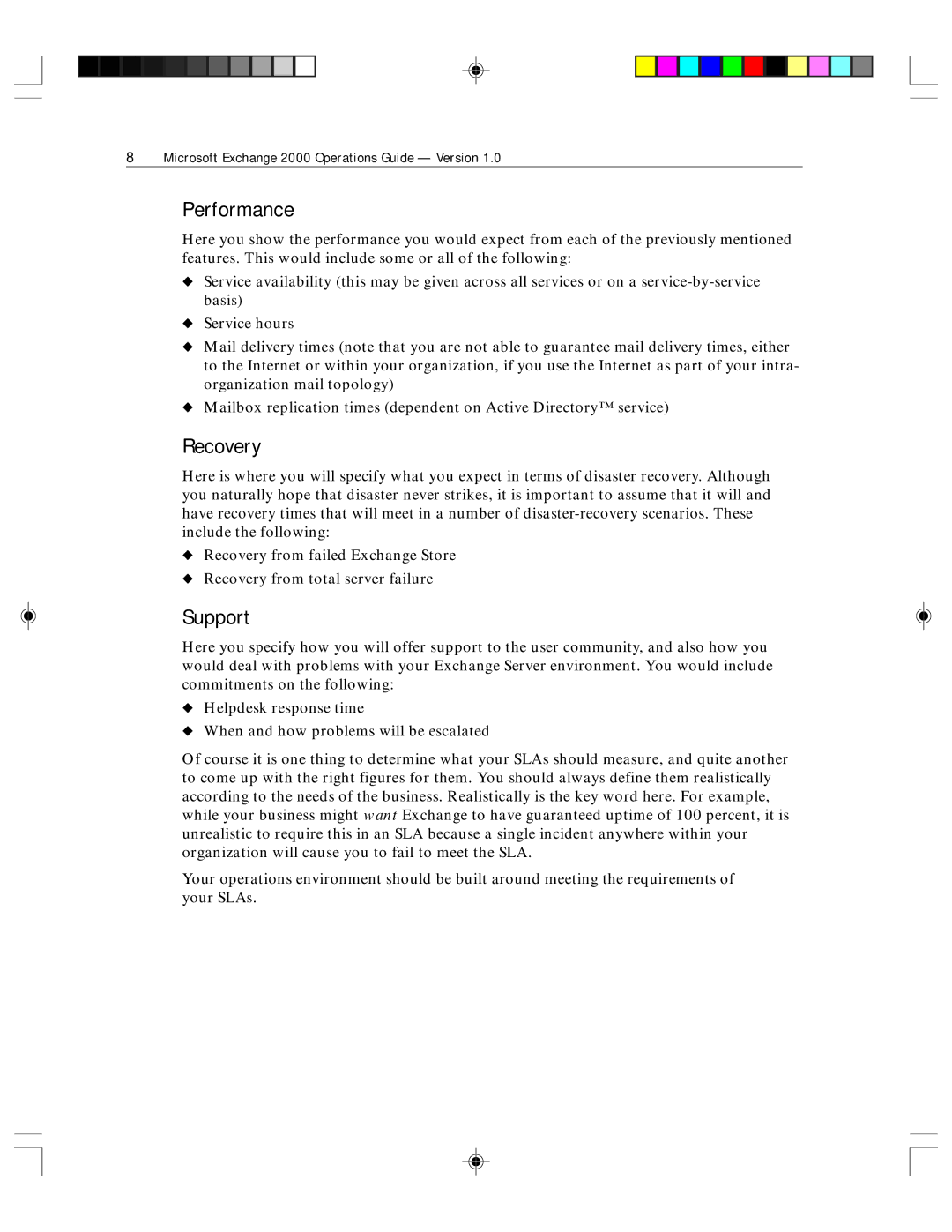
8Microsoft Exchange 2000 Operations Guide — Version 1.0
Performance
Here you show the performance you would expect from each of the previously mentioned features. This would include some or all of the following:
◆Service availability (this may be given across all services or on a
◆Service hours
◆Mail delivery times (note that you are not able to guarantee mail delivery times, either to the Internet or within your organization, if you use the Internet as part of your intra- organization mail topology)
◆Mailbox replication times (dependent on Active Directory™ service)
Recovery
Here is where you will specify what you expect in terms of disaster recovery. Although you naturally hope that disaster never strikes, it is important to assume that it will and have recovery times that will meet in a number of
◆Recovery from failed Exchange Store
◆Recovery from total server failure
Support
Here you specify how you will offer support to the user community, and also how you would deal with problems with your Exchange Server environment. You would include commitments on the following:
◆Helpdesk response time
◆When and how problems will be escalated
Of course it is one thing to determine what your SLAs should measure, and quite another to come up with the right figures for them. You should always define them realistically according to the needs of the business. Realistically is the key word here. For example, while your business might want Exchange to have guaranteed uptime of 100 percent, it is unrealistic to require this in an SLA because a single incident anywhere within your organization will cause you to fail to meet the SLA.
Your operations environment should be built around meeting the requirements of your SLAs.
